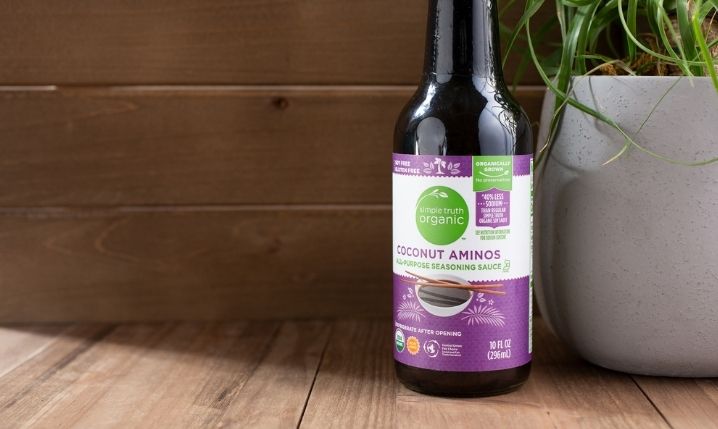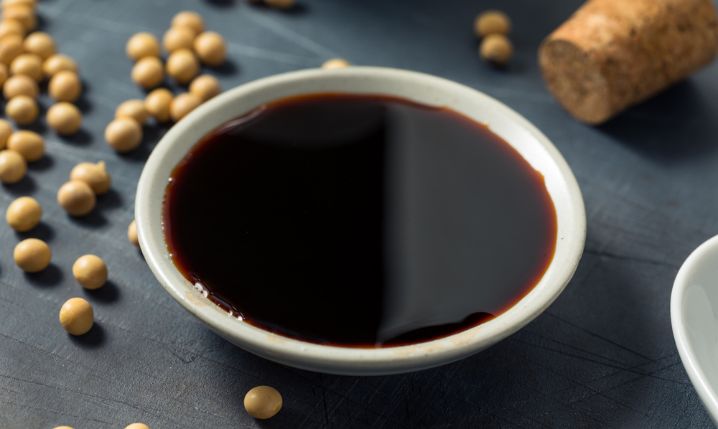Coconut Aminos is a sauce and table condiment prominently used in Asian cuisine. They’re a popular alternative to sauces like soy sauce, but you might often require a replacement for coconut aminos themselves. Continue reading to find the perfect coconut aminos substitute for you.
Contents:
What Are Coconut Aminos?

Coconut aminos are a popular all-purpose sauce and condiment used in Chinese and Japanese cuisine for seasoning, dipping, and food dressings. You can also use them in various different cuisines and recipes.
They are made from fermenting coconut-blossom nectar, blended with sea salt, and added water to create a delicious and authentic umami flavor. The umami taste is prominent; coconut aminos do not taste like coconuts despite the name.
Coconut aminos are a popular alternative to soy sauce because they are soy-free. They are also gluten-free and MSG (Monosodium Glutamate) free, which is why they’re considered to be a healthier alternative to most sauces used in Asian cooking.
The sauce itself is a deep dark brown with a thinner consistency than some sauces such as tamari. Coconut aminos taste most similar to regular soy sauce. However, they are distinctively more salty than similar counterparts, such as liquid aminos.
You can use coconut aminos for stir-fries, salads, noodles, dressings, dips, marinades, and more.
Substitutes For Coconut Aminos
See the table below for some of the best substitutions for coconut aminos based on taste and dish usage. You can read on to learn more about each alternative and whether it suits those with intolerances or allergies.
| Substitute | Taste | Good For |
|---|---|---|
| Tamari | Umami, Mildly Sweet | Sushi, Sashimi, Stir-fries, Noodles, Veggies, Meat |
| Liquid Aminos | Salty, Sweet, Umami | Stir-fries, Soups, Veggies, Chicken, Noodles |
| Soy Sauce | Salty, Sharp, Umami | Noodles, Soups, Sushi, Stir-fries, Chicken, Pork |
1. Tamari

Tamari is a Japanese sauce that is well-known as Japan’s equivalent of soy sauce. You can substitute tamari for coconut aminos in stir-fries, sashimi, noodles, and virtually any recipe in which you’d normally use coconut aminos.
The sauce itself is very dark, with a rich umami flavor. The taste is slightly more nuanced than regular or dark soy sauce, but it still tastes similar to coconut aminos and soy sauce.
Traditional tamari sauce is gluten-free and vegan as it is made from pressing miso paste (made with soybeans) which is fermented and then drained to create the tamari.
As tamari is made from miso paste, it contains soy, which makes it unsuitable for those with soy allergies or intolerances.
However, organic tamari brands do not contain either gluten or MSG, which means it is suitable if you have problems with either of those ingredients.
2. Liquid Aminos

While they are often confused, there are some differences between coconut aminos and liquid aminos. However, you can still use liquid aminos as a sub for coconut aminos as a seasoning for vegetables, stir-fries, and meat dishes.
If you’re wondering whether liquid aminos are considered a good option for those with intolerances and allergies, then you should know that they’re MSG-free and gluten-free. However, like tamari and soy sauce, they do contain soy.
Liquid aminos have a sweet-salty umami flavor that is sweeter than tamari. Some would consider them to have more saltiness than coconut aminos, but opinions do differ on this matter as the difference is negligible.
The sauce itself is a dark brown with a thin, almost watery consistency, just like coconut aminos, so when it comes to a 1:1 substitute option that won’t affect the viscosity of a dish, it’s an excellent choice.
3. Soy Sauce

As one of the most famous sauces in the world, soy sauce has divided opinion for thousands of years since it was first invented during the Han Dynasty in Ancient China.
Almost all umami-flavored sauces have been created as an alternative to traditional soy sauce. So this means that unless you’ve got a serious intolerance or an allergy, that you can almost always substitute soy sauce for coconut aminos or any of the sauces on this list.
You can use soy sauce in broths and soups for noodles like shoyu ramen. It can be used as a dipping sauce for sashimi, sushi, and more. It also works excellently in stir-fries with vegetables, meat, or both. No matter what recipe you’re following with coconut aminos, you’ll be able to use soy sauce instead, as it’s incredibly versatile.
You should know that soy sauce contains gluten, MSG, and soy, which often makes it an unsuitable alternative to coconut aminos if you need to avoid any of those ingredients.
Soy sauce comes in two forms: dark soy sauce and light soy sauce, both of which are sometimes referred to as ‘regular’ soy sauce.
A light soy sauce is the best option for substituting soy sauce for coconut aminos. You can tell the difference visually because dark soy sauce is much darker than the browner ‘light’ soy sauce options. This is because it has less saltiness and a more similar light-thin consistency to coconut aminos.
Conclusion
There are many reasons that you might require a coconut aminos substitute. Fortunately, some excellent options are widely-available in most stores. You can choose soy sauce if you want an authentic flavor, and if you need something different for your health, there’s always tamari or liquid aminos.
More about Coconut Aminos: